Nina Beier, Simon Denny, Marlie Mul
Cold Intimacy
15th November – 20th December 2014
Anna Schwartz Gallery Carriageworks
Cold Intimacy concerns the history of emotions and the history of images as intertwined phenomena. Itunderstands the word ‘intimacy’, often used to describe encounters with artworks, as possessing a new valence in the twenty-first century. Likewise, it understands the word ‘image’, as bearing a differentmeaning today compared with the use of the same word a century ago.
This exhibition explores the nature of emotions in the age of the Internet. Titled after the recently published text ‘Cold Intimacies’ by Eva Illouz,1 in which she posits that advanced capitalism has fostered an emotional culture that encourages both self-exposure and self-exploitation, meanwhile totally reshaping interpersonal relationships, the exhibition considers the types of responses and relationships the computer-generated image solicits. Further, it explores the implied hand of the artist in the digital image — despite the absence of a physical trace.
According to Illouz, ‘Market-based cultural repertoires shape and inform interpersonal and emotional relationships, while interpersonal relationships are at the epicenter of economic relationships.’[2] She argues that the economy can no longer be separated from humanity in contemporary society: citing examples of corporate culture making productivity an emotional concern; and processes of rationalisation inspired by economic and political models (compromise, exchange, equality and equity) being used to structure personal relationships.
The very phrase Cold Intimacy seems self-negating — the pairing undoes the warmth and closeness associated with the latter word, and replaces it with connotations of isolation and sterility. In this way the phrase relates to the experience of the digital image, and in turn the predominant experience of contemporary art. As Simon Denny has stated:
…the practice of viewing exhibitions on a screen, on the internet, or in digital photos… happens a lot. I found I was doing this and lots of other people were seeing my exhibitions in this form. In a way you can’t really say that you have seen these things (when you have seen them on a screen), but at the same time you haven’t seen nothing.[3]
As critic Paul Taylor anticipated three decades ago, viewing exhibitions and artworks primarily through documentation is very common in geographically isolated Australia, where one’s relationship to the rest of the art world is often mediated by digital imagery. Cold Intimacy brings to us the work of four artists based in Europe, whose work is not often seen in Australia. It allows us to create personal relationships with and intimate readings of the work by experiencing it in the flesh, but also examines the coldness of the digital imagery that is reflected, critiqued and celebrated within the very works themselves.
Making the claim that one must ‘kill’ an object in order to animate it, Nina Beier’s ‘Demonstrator’ series portrays futility as a state of pure presence as suggested by 20th century German philosopher Martin Heidegger’s ‘tool analysis’, which suggests that only broken objects can be truly experienced for what they are. Beier’s Demonstrators question the extent that the lifeless can be brought to life when mimicking life. For this series she purchased stock images using the keywords ‘drowning coins’, printed them on billboard paper, dipped them in glue and hung them to dry from trapezes suspended from the ceiling. In this way the body of the gymnast has been replaced by the digital image.
Simon Denny’s practice emphasises relationships within communities of things, as well as people. In his installation works, the material and immaterial cultures of contemporary life are deployed to perform themselves in a hyper-networked diorama of knowledge and communication. Following McLuhan’s notion that a dominant technological medium only becomes visible at the moment of its obsolescence, Denny is interested in television and its unchallenged dominance before the Internet, and the inherent obsolescence of current evolving television technologies. His recent work has studied the start-up industry, focusing on the branding, media and rhetoric of recent technology conferences. He has shone light on business management strategies, with a particular focus on multinational electronics corporation Samsung. New Management, the title of Denny’s recent exhibition at Portikus in Frankfurt am Main, and the title of a work included in Cold Intimacy, refers to a pivotal meeting of executives and investors that Samsung held in Frankfurt in 1993, which formed the origin of their mobile and television production empire.
Alicia Frankovich’s sculpture and video work celebrate human possibilities and transformative potential. Her practice explores the body’s range, its failures and movement as both metaphor and motif in relation to social and psychological constraints. Frankovich’s video work, Defending Plural Experiences: MOCAP Creation, was formed from the documentation of a choreographed performance shot in the butterfly enclosure at the Melbourne Zoo. Motion capture technology animated the movement of a dancer through a 24-point camera system, which was then translated into two digital avatars, one zombie-like and one fashioned in human form, layered on top of the live footage and combined with sound. Exploring non-hierarchical relations between animal, human and digital, each engages in modes of transformation within the one environment.
Marlie Mul’s sculptures often activate everyday objects to consider notions of human interaction and real versus replica. For ‘Cold Intimacy’ her work is drawn from the ongoing series No Oduur. Comprising a wall-based, steel air-vent as ashtray and freestanding plexiglass ‘healing pole’, the cigarette butts and nicotine patches present in the work depict traces of human behaviour and suggest the invisible presence of a virtual population. Smoking is used as a visual tool to speak about various topics in these works: for example, loose visual references that image the presence of smoke as a cloud emulating metaphysical clutter; or the spatial issue of the passive smoker where air becomes something that can be territorialised.[4]
‘Cold Intimacy’ considers the value and validity of the digital image when it is compressed and shared in the virtual environment. It looks at the presence or absence of life in a jpeg or on a screen, its inherent coldness, and how one might navigate personal and professional relationships in the digital age. It brings the work of Beier, Denny, Frankovich and Mul together to see what relationships might emerge between their objects, and considers the future of the relationship between the image and the object at this time.
Melissa Loughnan
[1] Illouz, Eva, Cold Intimacies, Polity Press, 2007. Illouz is Professor of Sociology at The Hebrew University of Jersalem.
[2] Illouz, Eva, Cold Intimacies, Polity Press, 2007, p. 5.
[3] ‘Commentary: Interview between Simon Denny and Dan Arps’ in Denny, Simon, Video Aquarium Broadcast, published by Galerie Daniel Buchholz and Michael Lettt, 2010, p. 266
[4 ] ‘Alexander Scrimgeour speaks with Marlie Mul’, ICA Journal, 25 Jun – 14 Sep 2014
Nina Beier courtesy Laura Bartlett Gallery, London
Simon Denny courtesy Michael Lett, Auckland and Sarah Cottier Gallery, Sydney
Marlie Mul courtesy Croy Nielsen, Berlin
Images
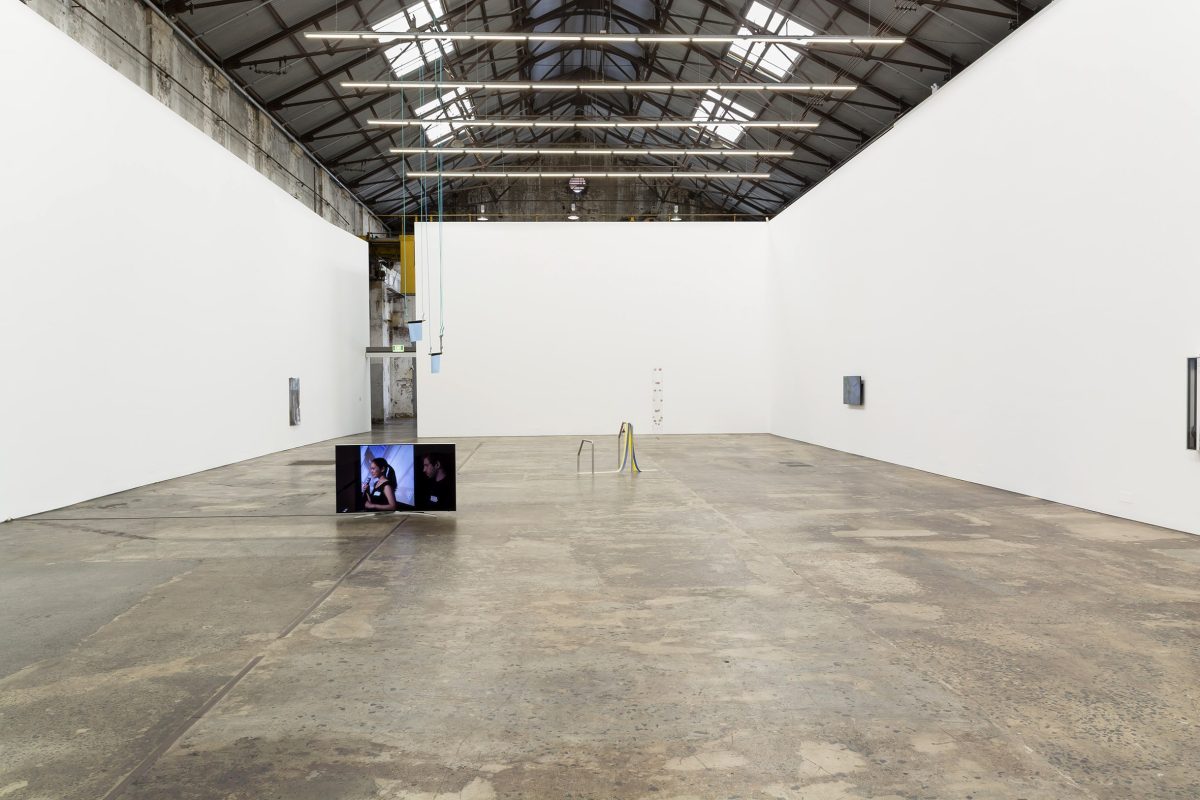
Cold Intimacy, 2014
installation view, Anna Schwartz Gallery, Carriageworks
Curated by Melissa Loughnan
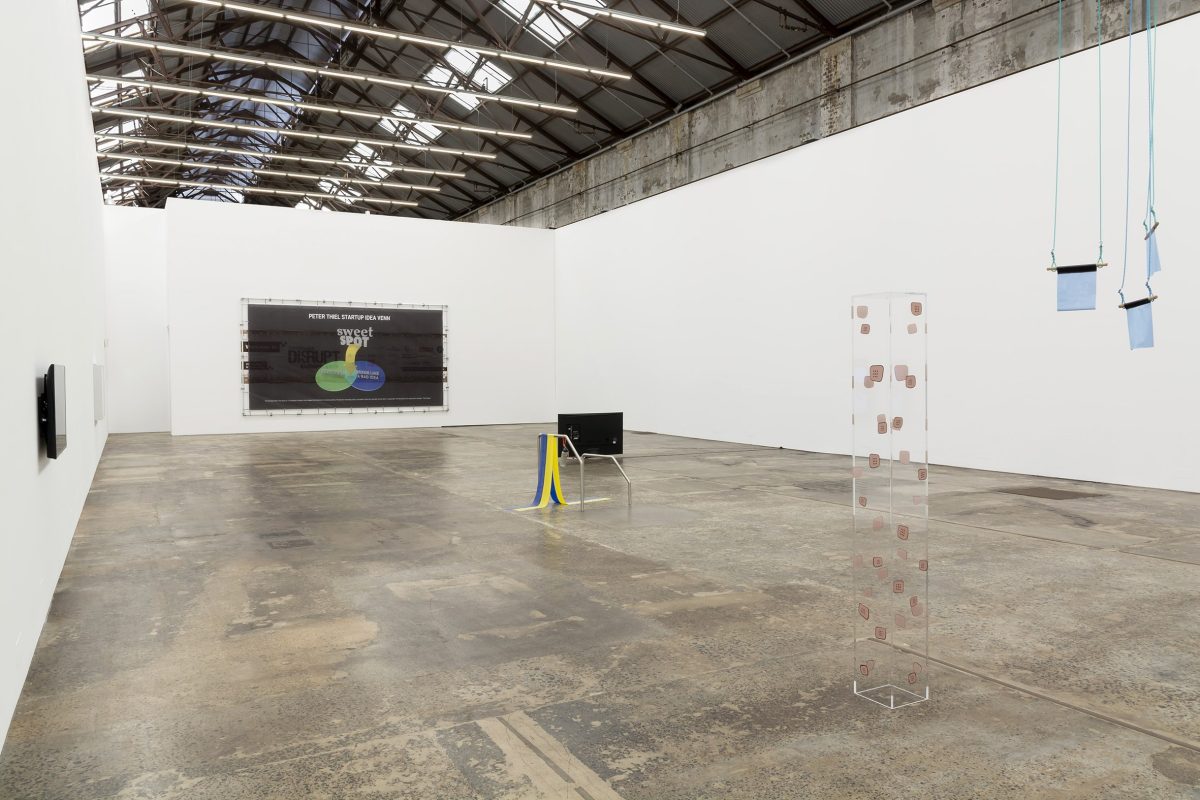
Cold Intimacy, 2014
installation view, Anna Schwartz Gallery, Carriageworks
Curated by Melissa Loughnan
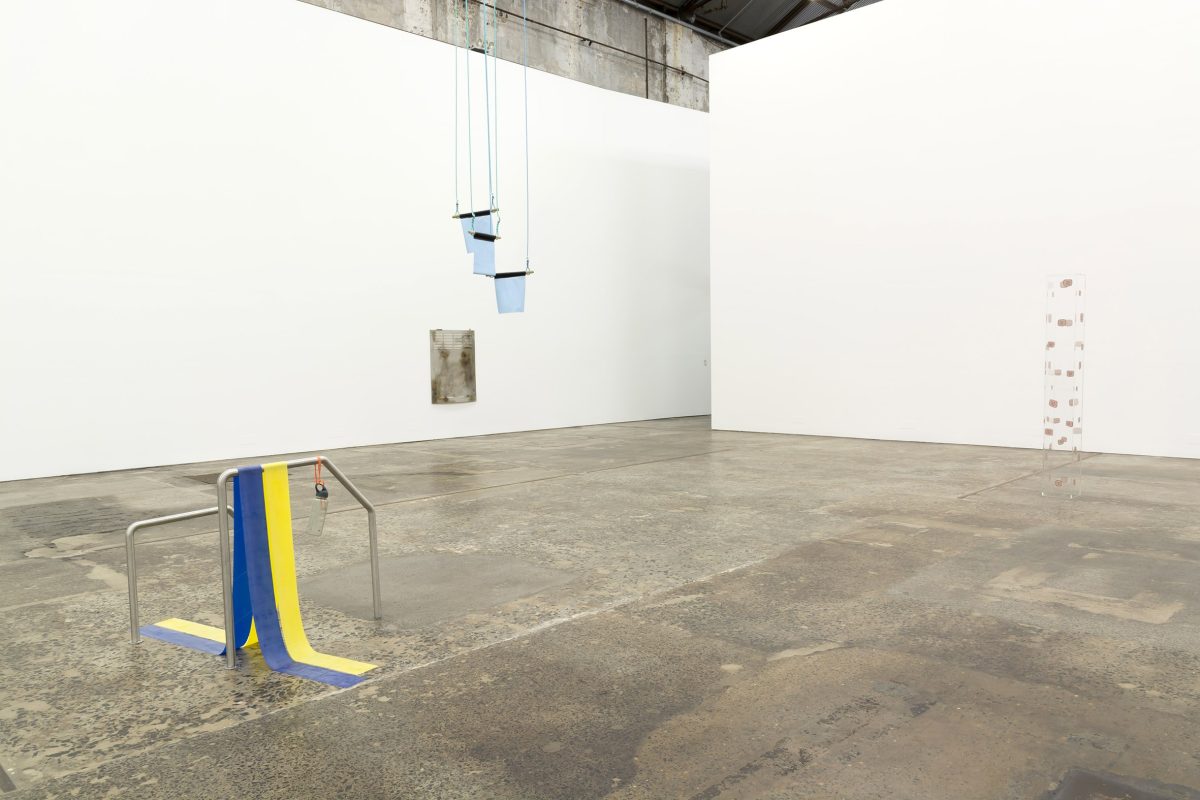
Cold Intimacy, 2014
installation view, Anna Schwartz Gallery, Carriageworks
Curated by Melissa Loughnan

Nina Beier
The Demonstrators (Sinking Coins), 2014
Poster, glue, trapeze
645 x 58 cm, 705 x 58 cm and 726 x 58 cm
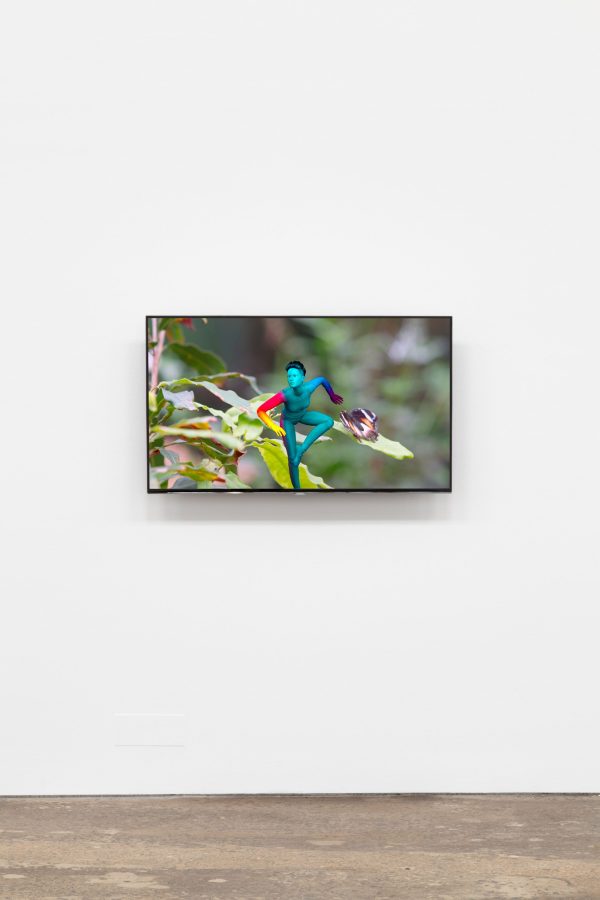
Alicia Frankovich
Defending Plural Experiences: MOCAP Creation, 2014
36 minutes 28 seconds
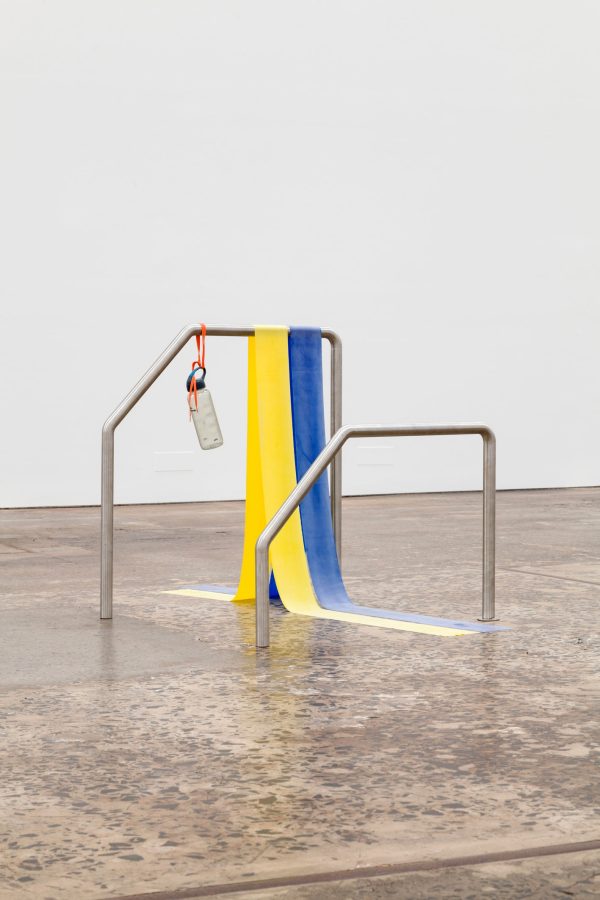
Alicia Frankovich
Not Yet Titled, 2013
Stainless steel, Thera Bands, drink bottle, shoe lace
80 x 90 x 45 cm
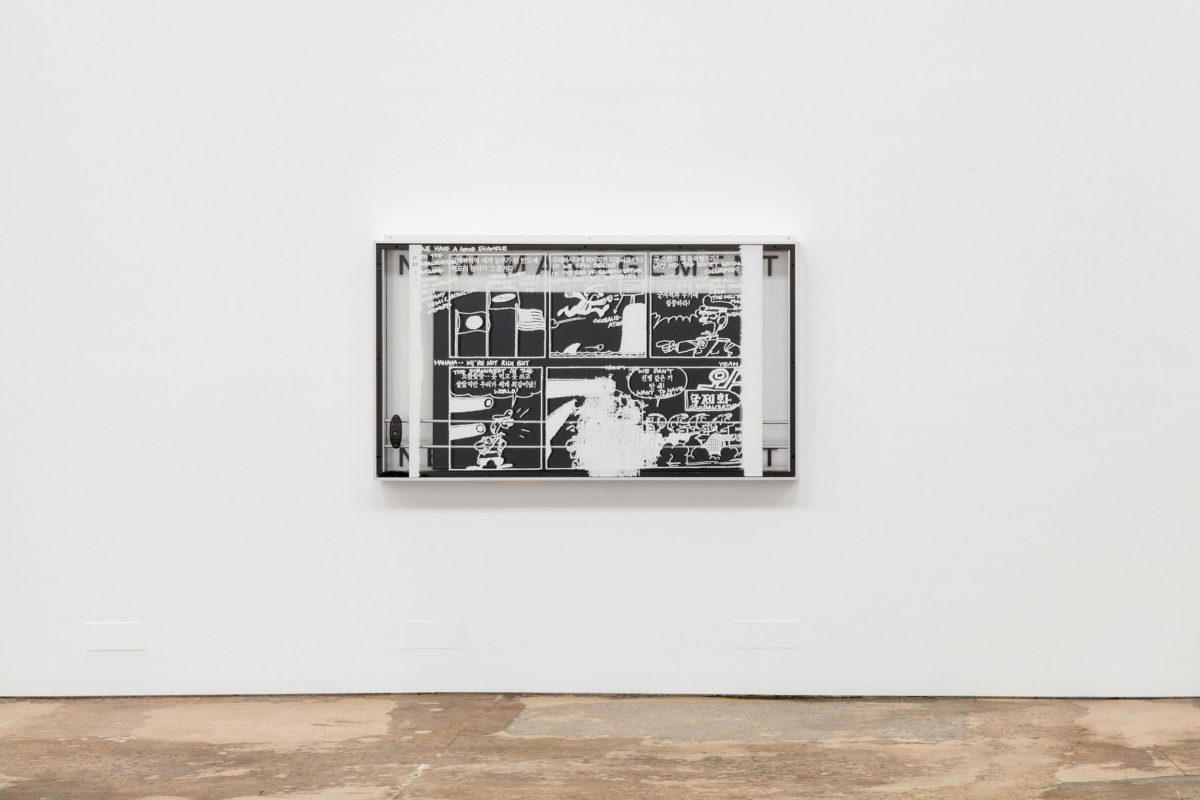
Simon Denny
New Management, 2014
Anodised aluminium, digital print on perspex, screws, 55″ Samsung 3D Smart TV, remote control
97 x 170 x 12.5 cm
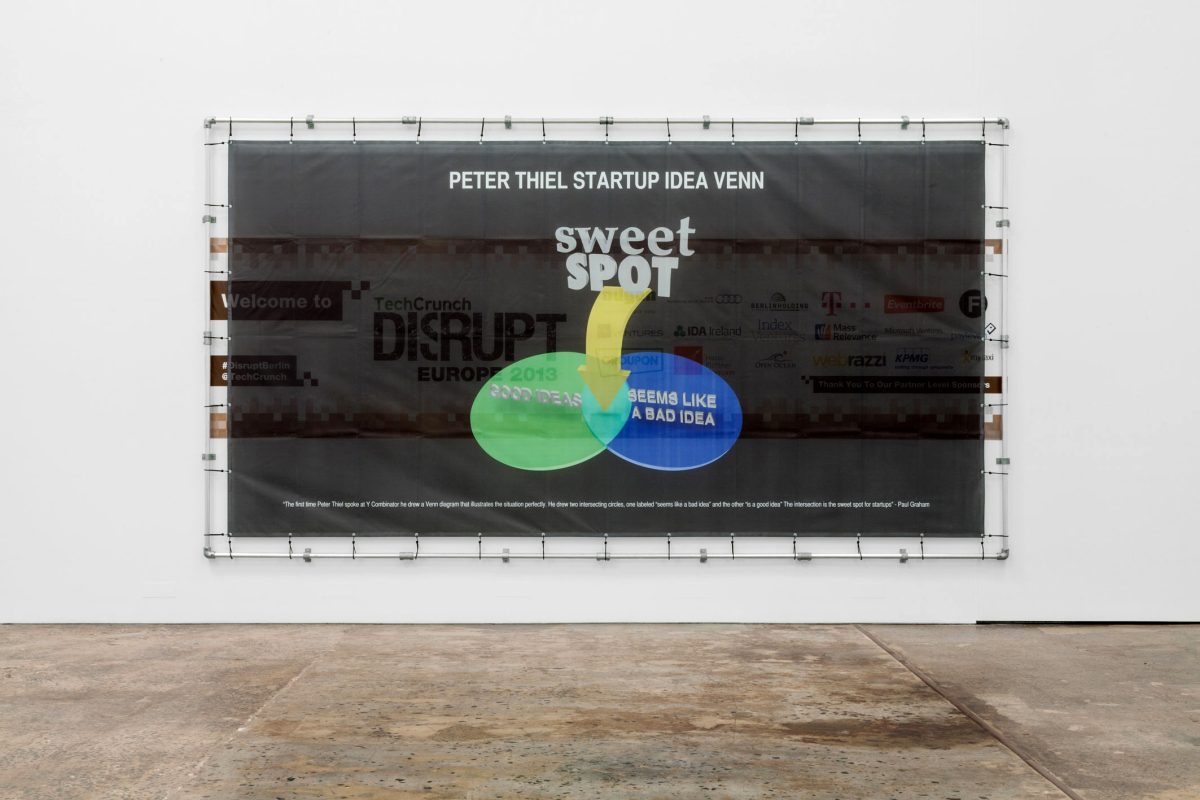
Simon Denny
Disrupt Peter Thiel Sweet Spot, 2014
Digital print on billboard mesh, custom aluminium frame, fittings, TechCrunch Berlin Disrupt Banner
320 x 600 x 10 cm
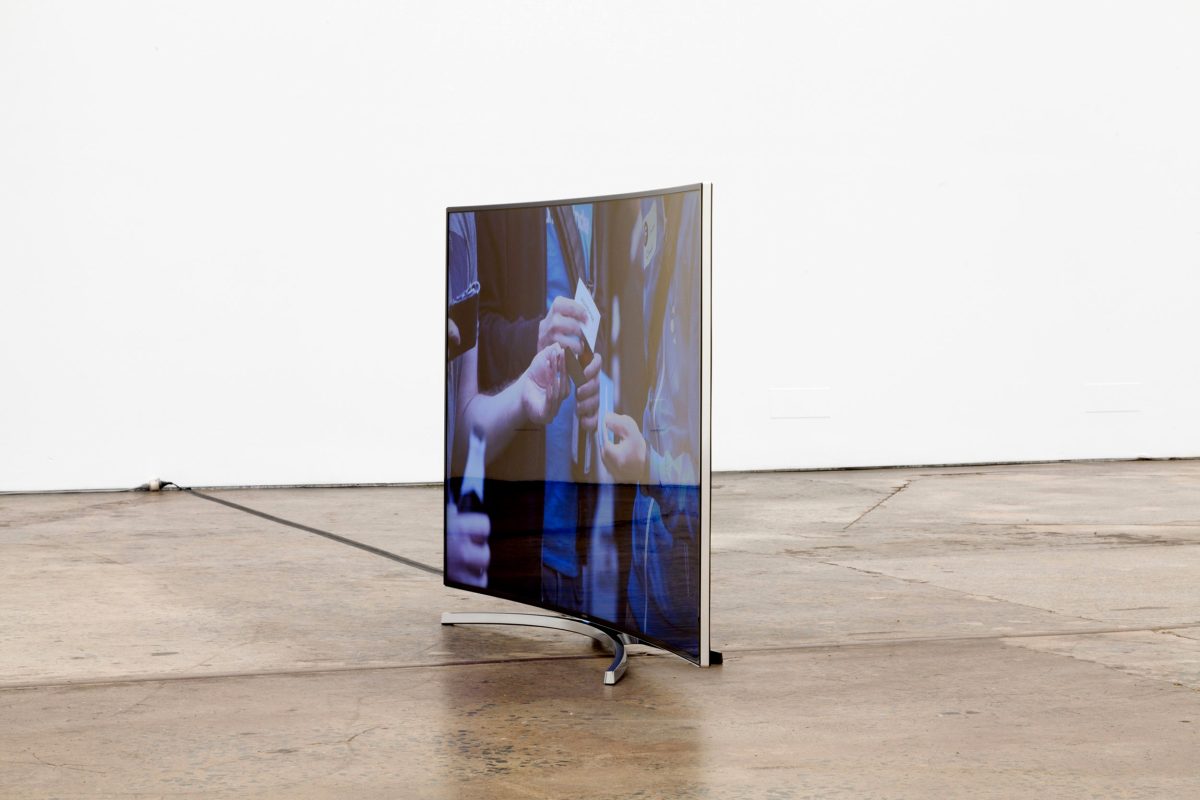
Simon Denny
Seedcamp Documentary, 2014
High Definition video, 65″ Samsung curved 3D Smart TV
2 minutes 41seconds
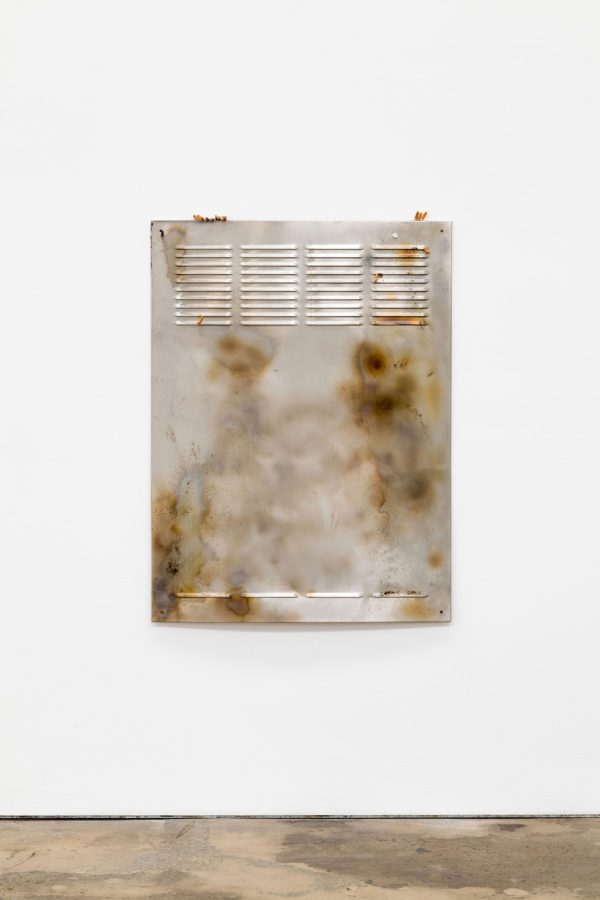
Marlie Mul
Air Vent/Butt Stop (Fake Coughing In Front Of Smokers Just To Make Them Feel…), 2014
Steel, cigarette, paper
120 x 90 cm
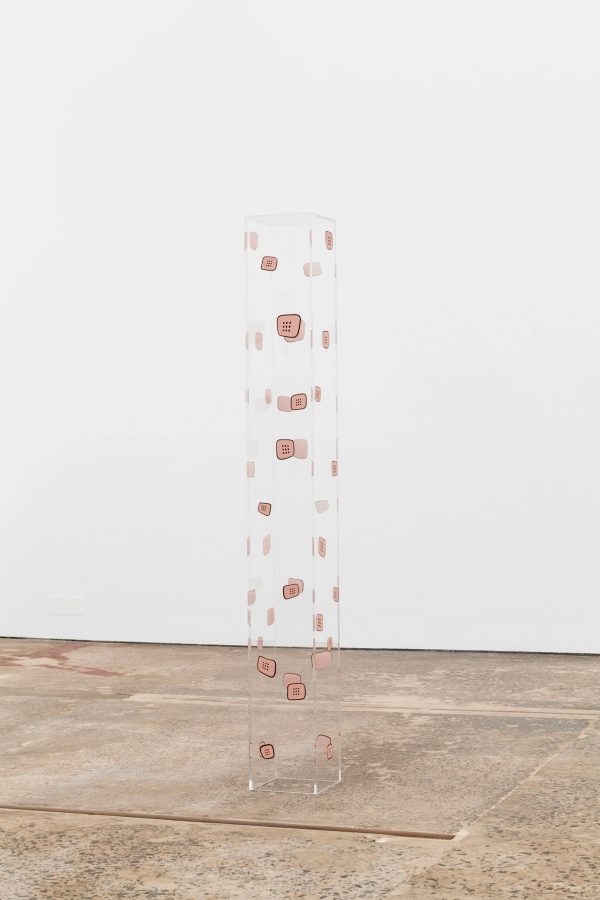
Marlie Mul
Plaster Pole (Healing), 2014
Silk screen on Plexiglas
200 x 25 x 25 cm










